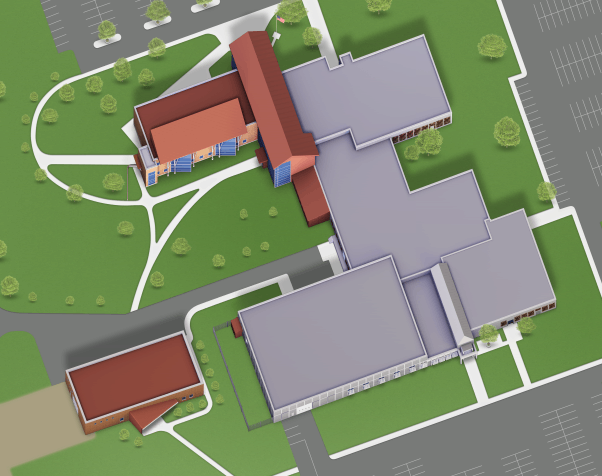|
American Psychological Association
Outstanding research in psychological science under the category of behavioral and
social sciences or any category
related to psychology (e.g., animal sciences, biochemistry, computer science, environmental
science, mathematical science, medicine and health).
Criteria
Grades eligible: 9-12
|
|
Association for Women Geoscientists
Open to female students whose projects, in the opinion of the judges, exemplify high
standards of innovativeness and scientific excellence in the geosciences. Special
consideration will be given to projects that increase the public awareness of the
geosciences, illustrate the interdisciplinary nature of the geosciences, or promote
the sensitivity to the earth as a global system.
Grades eligible: 9-12
|
|
Citizens for Clean Energy
The Great Falls-based Citizens for Clean Energy organization (ccemontana.org) wishes to recognize science fair projects that focus on innovative renewable energy
production and carbon emissions mitigation. Qualifying student projects may receive
certificates and monetary awards of $40-$120. Students who wish to be considered for
a CCE Merit Award are strongly encouraged to include wording in their project title
or project description that identifies a clean energy or climate change solution theme.
Grades eligible: 6-12
|
|
Environmental Protection Agency (EPA)
Simple recognition of all projects in the areas of environmental sciences and environmental
engineering. For the students attending ISEF in Anaheim, CA in May, EPA judges will
be onsite and interacting with ISEF finalists as they make the selection for EPA's
Patrick H. Hurd Sustainability award.
Grades recognized: 9-12
|
|
NASA Earth System Science Award
The NASA Earth System Science Award will be given to the project that best demonstrates
insight into Earth’s interconnected systems. The project should incorporate studies
of the different spheres of the Earth system, their interactions, and change over
time. It should include cause-effect relationships based on evidence and demonstrate
a clear understanding of how those relationships affect Earth as a system.
Criteria
Grades eligible: 9-12
|
|
National Geographic Award
The award-winning project will:
· Focus on issues of oceans, land, wildlife, human history & cultures, and
human ingenuity
· Brings geographic concepts and skills to life in new, non-traditional ways
· Target underrepresented communities
· Have potential for scale
· Bring innovation to the space and place
Grades eligible: 9-12
|
|
National Oceanic and Atmospheric Administration (NOAA)
Awarded to the student whose research emphasizes NOAA's mission of Science, Service,
and Stewardship: "To understand and predict changes in climate, weather, oceans, and
coasts, To share that knowledge and information with others, and To conserve and manage
coastal and marine ecosystems and resources."
Criteria
Grades eligible: 6-12
|
|
Naval Science Award
(Individual Projects ONLY - Team Projects NOT Eligible)
The Naval High School Science Awards Program (NSAP) is a U.S. Navy and Marine Corps
program that encourages our nation's students to develop and retain an interest in
science and engineering. NSAP recognizes the accomplishments of eligible students
at regional and state science and engineering fairs and the International Science
and Engineering Fair (ISEF) in producing and presenting quality science and engineering
projects.
Criteria
Grades eligible: 6-12
|
|
Ricoh USA, Inc.
Awarded to the student demonstrating outstanding efforts in addressing issues of environmental
responsibility and sustainable development in his/her science and engineering project.
The project must include principles & technical innovations offering the greatest potential
for increasing the ability to grow environmentally friendly & socially responsible
businesses.
Criteria
Grades eligible: 9-12
|
|
Society for In Vitro Biology
(Individual ONLY)
Awarded to the most outstanding 11th grade student exhibiting in the areas of plant
or animal in vitro biology or tissue culture.
Grades eligible: 11
|
|
US Air Force
The Air Force Research Laboratory is proud to support Science, Technology, Engineering,
and Mathematics (STEM) initiatives for our nations' youth. The Air Force is committed
to providing opportunities to develop the future leaders in STEM.
Grades eligible: 9-12
|
|
US Agency for International Development (USAID)
The U.S. Agency for International Development recognizes one individual or team project
with the potential to make an impact on addressing international development challenges.
Criteria
Grades eligible: 9-12
|
|
US Metric Association Award
The project should involve quantitative measures and should use units of the SI metric
system for those measures. The subject of the project should not be the SI system
itself. Any project which involves measures and expresses those measures consistently
and correctly in SI metric would be a good choice to win the metric award. A project
which uses a variety of metric units for different kinds of measures (such as force
in newtons, pressure in kilopascals, energy in joules, power in watts, etc.) would
be a better choice than one which only uses centimetres to measure lengths or litres
for volumes. A project in which the measures were integrally important to the research
would be a better choice than one in which measures were only used to describe the
sizes of containers or the amounts of substances tested (or the size of the display
board!). Units of older (non-SI) metric systems are NOT acceptable. Examples of such
non-acceptable units are: mmHg, cmHg or millibars for pressure; calories, kilocalories
or ergs for energy or heat; dynes, grams or kilograms for force or weight. (Grams
and kilograms are mass.) The accompanying table, Judges Guide to SI Units, gives the
name and correct symbol for many of the unit'> of the SI system, those for measures
that are most likely to be encountered. Also shown are a few non-SI units which are
officially considered acceptable for use with ST.
Criteria
Grades eligible: 9-12
|
|
Yale Science and Engineering Association
Awarded to the most outstanding 11th grade project exhibiting in the areas of Computer
Science, Engineering, Physics or Chemistry.
Grades eligible: 11
|

 Welcome to Great Falls College MSU
Welcome to Great Falls College MSU


